Physiotherapy in Redcliffe for Swimming
Stretching is an essential part of successful swimming. A good stretching routine can help to minimize muscle imbalances, prevent injury, improve your exercise tolerance and your swimming performance. The following stretching program is designed for swimmers who do not have any current injuries or individual stretching needs. If you have an injury, or a specific mechanical imbalance that may be holding back your swimming performance, your My Health Team physiotherapist can design a stretching program just for you.
When is the Best Time to Stretch?
When your muscles are warm! Swimming is a dynamic sport so you'll need both dynamic and static stretching. Dynamic stretches form part of your pre-swim warm-up. Static stretches can be included at the end of your cool down or at other times to improve your overall fitness.
Pre-swim:
General warm up (5-10 minutes). The aim of a general warm-up is to get the blood flowing to all parts of the body to be used during swimming, including the cardiovascular system. A slow speed, low intensity swim makes an ideal warm-up. You can use any stroke with the exception of butterfly (which tends to be high intensity) or a variety of strokes. If you prefer not to get in and out of the pool for a warm-up then stretch, you could warm up out of the pool using a walk or light jog, but remember to keep the upper body active by using your arms.
Dynamic stretching. Gradually the speed and intensity of your movement is increased. See below for stretches which should be performed out of the water.
Technical and speed warm up. For experienced swimmers, this includes high intensity, swimming specific skills. Drills should be kept short with recovery time between drills to ensure you are not fatigued too early. Beginners and recreational swimmers may choose to exclude this step, and instead use this time to practice turning, diving or stroke improvement.
The pre-swim regime, including the dynamic stretching program detailed below, will take about 20 minutes to complete.
Post-swim:
Cool down. A cool down allows the body, in particular the cardiovascular system, to gradually return to its resting state. A cool-down reduces your chances of becoming dizzy or faint after exercise, allows any waste such as lactic acid that has built up during exercise to dissipate and may reduce your chance of having Delayed Onset Muscle Soreness (DOMS). Cool down by gradually reducing your swimming intensity, using an easy stroke, or walking in the water for about 5-10 minutes.
Static stretches. Commence your stretching regime directly after a short cool-down, before the muscles have cooled completely.
Rules for Dynamic Stretching:
Warm up your muscles first, then stretch while your muscles are still warm.
Move through your range of movement, keeping control of the movement with your muscles. Do not allow momentum to control the movement by "flinging" or "throwing" your body parts around.
You may feel light resistance in your muscles, but you should never feel pain during a stretch.
Start with slow, low intensity movements, and gradually progress to full-speed, swim-like movements.
Dynamic Stretches:
Examples:
Calf raises
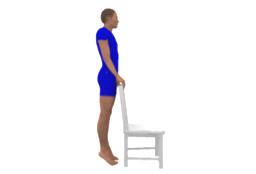
Leg curls
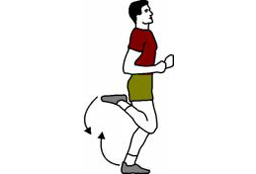
Trunk rotation
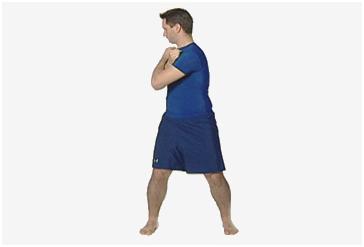
Arm circles
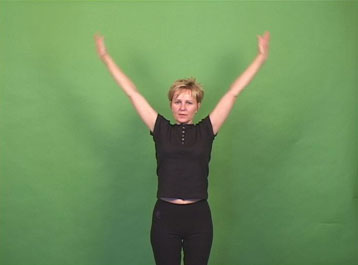
Horizontal flexion and extension
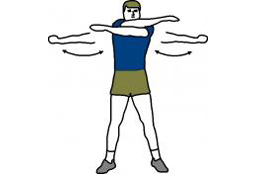
Shoulder internal rotation
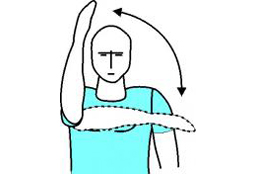
Latissimus Dorsi Stretch
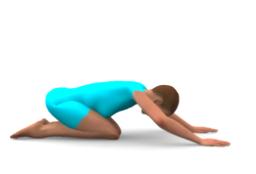
Rules for Static Stretching:
Warm up your muscles first, then stretch while your muscles are still warm.
Slowly take your muscles to the end of their range. You will feel light resistance in the muscle, but you should never feel pain during a stretch.
Hold the stretch in a static position. Do not bounce. This will help slow down the nerve impulses and return your muscles to a resting state.
Hold each stretch for 20-30 seconds. Repeat each stretch 3-4 times.
Static Stretches for Swimming:
These muscles are your prime movers for swimming. You'll need to stretch these muscles after you swim. Don't forget to stretch both sides.
Pectoral muscles

Hips can be moved from side to side, keeping hands firmly in place to apply extra pressure to one side at a time.
Posterior Shoulder Stretch
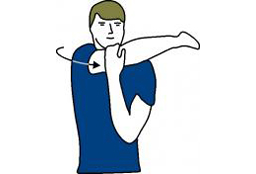
Neck and trapezius
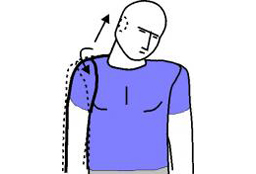
Bend your neck sideways, keeping the opposite shoulder firmly depressed. This stretch can also be repeated with the head rotated away from the depressed shoulder.
Shoulder external rotators
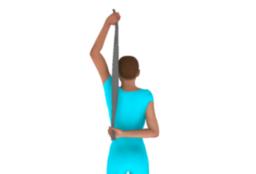
Use your towel to gently pull the bottom arm up.
Lumbar spine lateral flexors
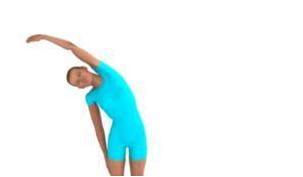
Trunk rotation

Calf (gastrocnemeus) stretch
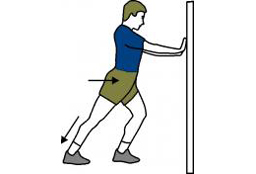
Hamstrings
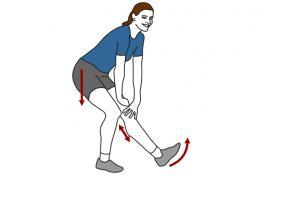
 Get Immediate Access To Your Special Report And Top Tips From Our PTs!
Get Immediate Access To Your Special Report And Top Tips From Our PTs!


